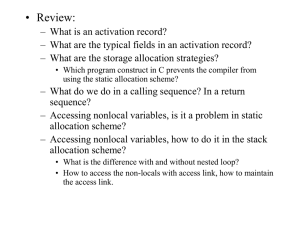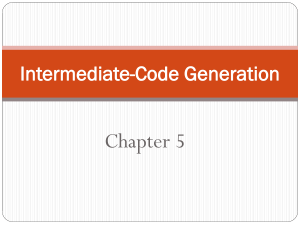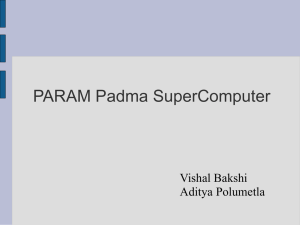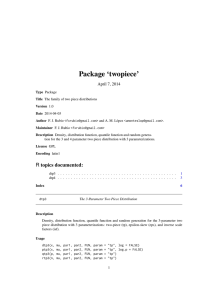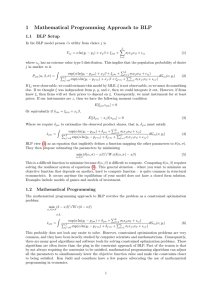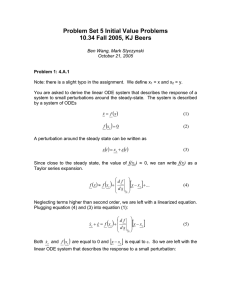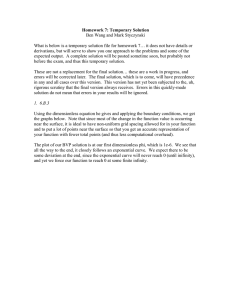• Intermediate Code • Generating machine-independent intermediate form.
advertisement
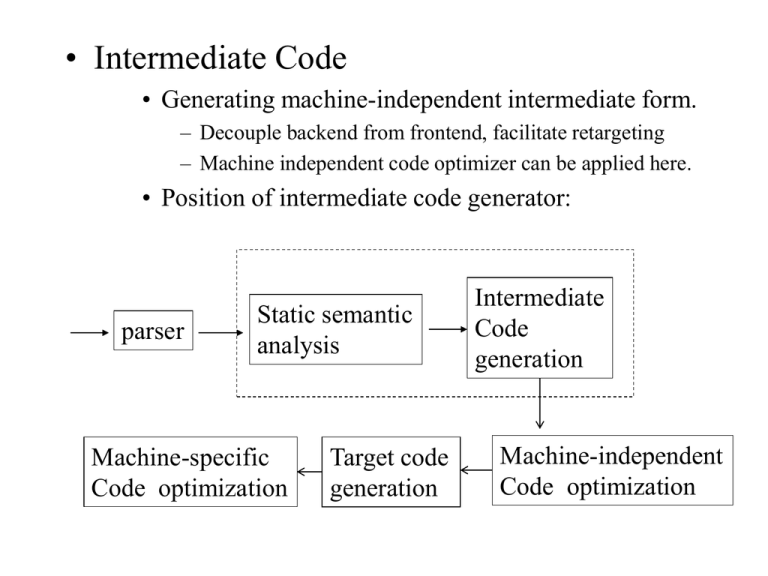
• Intermediate Code • Generating machine-independent intermediate form. – Decouple backend from frontend, facilitate retargeting – Machine independent code optimizer can be applied here. • Position of intermediate code generator: parser Static semantic analysis Machine-specific Code optimization Target code generation Intermediate Code generation Machine-independent Code optimization • Intermediate languages, many kinds for different purposes • High-level representation for source to source translation to keep the program structure: – Abstract syntax tree • Low-level representation for compiling for target machine. – An intermediate form that is close to low level machine language. – Three address code (more later) » gcc uses RTL, a variation of the three address code. • Other commonly used intermediate language – Control flow graph, Program dependence graph (PDG), DAG (direct acyclic graph) • Three address code: • A sequence of statement of the form x:=y op z • Example: a:=b*-c + b * -c t1 := -c t2 := b * t1 t3 := -c t4 := b * t3 t5 = t2 + t4 a = t5 t1 := -c t2 := b * t1 t3 = t2 + t2 a = t3 • Three address statements are close to the assembly statements (OP src1 src2 dst) • Some three-address statements that will be used later: – Assignment statements: • With a binary operation: • With a unary operation: • With no operation(copy) : x := y op z x:= op y x := y – Branch statements • Unconditional jump: • Conditional jumps: goto L if x relop y goto L – Statement for procedure calls • Param x, set a parameter for a procedure call • Call p, n call procedure p with n parameters • Return y return from a procedure with return value y – Example: instructions for procedure call: p(x1, x2, x3, …, xn): param x1 param x2 … param xn call p, n – Indexed assignments: • x := y[i] and x[i] := y – Address and pointer assignments • x := &y, x := *y
